Archetypal Character Arcs, Pt. 5: The King Arc
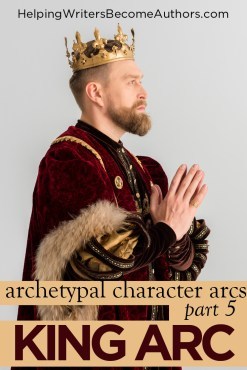 If we view the human life and thus the six archetypal character arcs of the “life arcs” as taking on the classic story-structure format of Three Acts, then it is no coincidence that the all-important Midpoint marks the transition from the Queen Arc to the King Arc.
If we view the human life and thus the six archetypal character arcs of the “life arcs” as taking on the classic story-structure format of Three Acts, then it is no coincidence that the all-important Midpoint marks the transition from the Queen Arc to the King Arc.
In any story, the structural Midpoint represents in many ways the turning point of the entire story. Within the plot it signifies a shift out of the “reactive” phase, in which the protagonist has been distracted by the Lie and by surface conflicts. Equally, it signifies the shift into the “active” phase, in which the protagonist begins to recognize what the conflict is really about and what antagonist he is really confronting. Thematically, this is represented by a Moment of Truth, in which the protagonist grasps the central Truth of his story (while not yet fully releasing or overcoming his Lie).
In our examination of the six life arcs, the middle two arcs of the cycle, comprising the “Second Act,” are the Queen (discussed last week) and the King. The Queen Arc ends with the protagonist essentially having become the King. Although not necessarily glimpsed within the Queen Arc itself, this signifies a total shift within the overall archetypal story. Up to this point, the arcs have represented the first half of life’s concerns with the exterior world—with one’s relationship to self, others, love, and power from both positions of subordination and of authority.
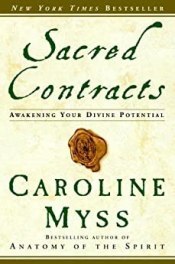
Sacred Contracts by Caroline Myss (affiliate link)
Obviously, anyone inhabiting the King archetype has reached the apex of temporal life. As Caroline Myss puts it in Sacred Contracts:
The King is an archetype of major proportions, representing the height of temporal male power and authority….
From here, it would seem there is nowhere to go but down. In some ways this is true. From this point, the character descends (and the word is symbolically important) into the second half of life—into old age, crippling mortality, and eventual death. From here, temporal power wanes. Whether the character will rise to the even greater (and in some ways more powerful) challenges of the Third Act of life depend on his ability to successfully fulfill his final charge as King.
The King Arc, then, is about a character at the height of temporal power who is faced with the realization that the greatest good he can do for his beloved Kingdom—which he has so far proven himself so worthy to rule—is to sacrifice himself and surrender the throne. His arc quite literally ends with the traditional low moment of the Third Plot Point as the transition from life’s Second Act to the Third Act.
Reminders: Once again, before we officially get started, I want to emphasize two important reminders that hold true for all of the arcs we’ll be studying.
1. The arcs are alternately characterized as feminine and masculine. Primarily, this indicates the ebb and flow between integration and individuation, among other qualities. Together, all six life arcs create a progression that can be found in any human life (provided we complete our early arcs in order to reach the later arcs with a proper foundation). In short, although I will use feminine pronouns for the feminine arcs and masculine pronouns for the masculine arcs, the protagonist of these stories can be of any gender.
2. Because these archetypes represent Positive-Change Arcs, they are therefore primarily about change. The archetype in which the protagonist begins the story will not be the archetype in which he ends the story. He will have arced into the subsequent archetype. The King Arc, therefore, is not about becoming the King archetype, but rather arcing out of it into the beginnings of the Crone Arc—and so on.
The King Arc: Becoming the SacrificeThe completion of the Queen Arc signified the rise of a worthy and aligned Ruler. Now represented as the King, the character is one who wields immense power. Symbolically, he is the ruler of a vast and successful empire. He is a good leader, possessing both the maturity to manage the Kingdom (in opposition to his passive counter-archetype the Puppet) and a true compassion for and understanding of his people (in opposition to the aggressive counter-archetype of the Tyrant).
But times are changing. Not only does he grow older, creating the need to prepare a worthy successor, but the Kingdom itself is about to face threats heretofore unheard of. Throughout his life up to this point, the King has proven his ability to courageously and successfully face down all manner of temporal antagonists. But this time the threat proves to be not of this world. A great and mysterious Cataclysm descends—and as the King will soon learn, it cannot be fully defeated by the might of his arm, but can only be quenched if he is willing to surrender all his power and sacrifice himself as propitiation.
Stakes: Glimpsing the Beginning of the EndWhen a character has everything, it is always clear he has everything to lose. For the King, the stakes are no longer about whether or not he will gain what he must gain in order to move forward in life. Rather, for the first time, they are about whether or not he can understand that he has reached the beginning of the end of his own life and certainly his own temporal power. Can he let go and make the transition gracefully? Or will he hold on, in all futility, and devolve into the Tyrant?
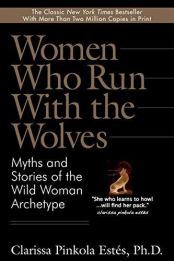
Women Who Run With the Wolves by Clarissa Pinkola Estes (affiliate link)
In Women Who Run With the Wolves, Clarissa Pinkola Estés speaks about a journey that is surprisingly inherent within the King archetype:
The king represents a trove of knowledge…. He carries the ability to take inner knowing out into the world and put it into practice, without mincing, muttering, or apologizing. [H]e is involved in the mechanisms of vital process of the psyche: the failing, dying, and return of consciousness. Later in the story … he will undergo a kind of death that will transform him from a civilized king to a wild one…. In psychic terms this means that the old central attitudes of the psyche will die as the psyche learns more. The old attitudes will be replaced by either new or renewed viewpoints concerning just about everything….
Although the plot in a King Arc can be absolutely epic, it is a fundamentally spiritual arc—more so than any that have preceded it. The protagonist is encountering life’s second great threshold, or Door of No Return, which parallels the Hero’s First Plot Point threshold. For the King, this threshold is truly crossed at his own story’s Third Plot Point when he exits his temporal realm of power and begins his descent into what will be the spiritual realm of the Crone.
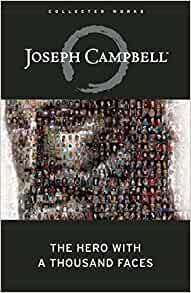
The Hero With a Thousand Faces Joseph Campbell (affiliate link)
In The Hero With a Thousand Faces, Joseph Campbell talks about what can be seen as this Third Plot Point threshold for the King:
Antagonist: Confronting the Monsters at the DoorThe ordeal is a deepening of the problem of the first threshold and the question is still in balance. Can the ego put itself to death? … The original departure into the land of trials [i.e., the Hero’s First Plot Point] represented only the beginning of the long and really perilous path of initiatory conquests and moments of illumination.
Just as the Hero had to fight a Dragon to protect those he loved, the King must sacrifice himself to the Cataclysm to safeguard the Kingdom. Just like old Beowulf the King, at the end of his saga, the King archetype offers himself to preserve and safeguard the Kingdom.
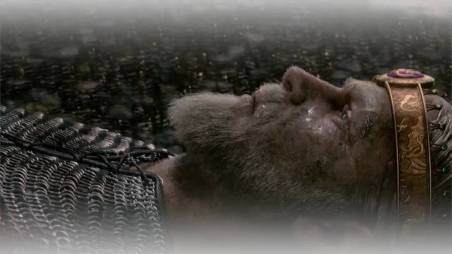
Although the Cataclysm may be initiated by other characters representing negative archetypes (such as the Tyrant, Witch, or Sorcerer—to be discussed later), the Cataclysm itself isn’t necessarily evil in nature. Rather, as a force that must be appeased, it specifically represents the demands of Life and Death. The King cannot retain his power forever; to do so goes against all natural laws. If he is to continue his life’s journey in health and grace—and for the good of all—he must accept that.
Symbolically, the King surrenders into his Third Act as a ritual sacrifice of sorts. This demand for his “death” may look evil and horrible to the younger eyes of the Maidens, Heroes, and Queens. It may even seem so to the King himself to some extent since he does not yet understand the truths of the Third Act. However, as with all the archetypes, what this represents is simply the natural progression of all things.
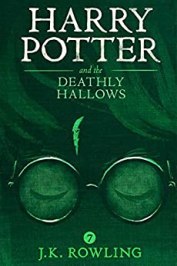
Harry Potter and the Deathly Hallows by J.K. Rowling (affiliate link)
The King surrenders himself to Death expecting nothing less, but he will be surprised (although not necessarily elated) to discover that this is not the end. Just as the Third Plot Point always symbolizes Death, it also always symbolizes (or at least offers the potential for) Rebirth. And so the King will come to glimpse the truth of life’s Third Act, which can be spoken of in J.K. Rowling’s beautiful line from Harry Potter and the Deathly Hallows:
And then he greeted Death as an old friend, and went with him gladly, and, equals, they departed this life.
In short, the King will end by discovering that this great enemy he has been facing in the form of the Cataclysm has, all along, been his teacher.
Theme: Sacrificing a King for a KingdomAt the Midpoint of his arc, the King will come to his Moment of Truth that the temporal battle on which his Maidens, Heroes, and Queens are focused is in fact not the victory they need. Within this realization—and ultimately his true heart in understanding that a leader is really a servant to his people—he reveals himself as a worthy propitiation against this supernatural threat.
In essence, regardless of any opposing human characters, the true antagonist in the King Arc is a supernatural phenomenon—an unbalanced force that must be appeased. Campbell references ancient traditions regarding the “death of a king,” but which just as importantly speak to the necessity of Old Age passing the torch of leadership on to the New Young:
Key Points of the King ArcThis is the sacrifice that King Minos refused when he withheld the bull from Poseidon. As [Sir James G.] Frazer has shown, ritual regicide was a general tradition in the ancient world. “In Southern India,” he writes, “the king’s reign and life terminated with the revolution of the planet Jupiter round the sun. In Greece, on the other hand, the king’s fate seems to have hung in the balance at the end of every eight years…. Without being unduly rash we may surmise that the tribute of seven youths and seven maidens whom the Athenians were bound to send to Minos every eight years had some connexion [sic] with the renewal of the king’s power for another octennial cycle.” The bull sacrifice required of King Minos implied that he would sacrifice himself, according to the pattern of the inherited tradition, at the close of his eight-year term. But he seems to have offered, instead, the substitute of the Athenian youths and maidens. That perhaps is how the divine Minos became the monster Minotaur, the self-annihilate king, the tyrant Holdfast, and the hieratic state, wherein every man enacts his role, the merchant empire, wherein each is out for himself.
For easy reference and comparison, I will be sharing some scannable summations of each arc’s key points:
King’s Story: An Awakening.
King Arc: Leader to Elder (moves from Regal World to Preternatural World)
King’s Symbolic Setting: Empire
King’s Lie vs. Truth: Strength vs. Surrender
“Physical strength is the pinnacle of human achievement.” versus “Spiritual strength requires me to relinquish my physical strength.”’

Spiral Dynamics by Don Edward Beck and Christopher C. Cowan (affiliate link)
King’s Initial Motto: “I, the capable.”
(This is via Spiral Dynamics’ “Orange” Meme. If you’re not familiar with Spiral Dynamics, this probably won’t mean anything, but I was fascinated to realize that the six positive archetypal arcs line up perfectly with the “memes” of human development as found in the theory of Spiral Dynamics.)
King’s Archetypal Antagonist: Cataclysm
King ’ s Relationship to Own Negative Shadow Archetypes:
Either Puppet finally wields his Power out of a growing Perception.
Or Tyrant learns to submit his Power to the bigger picture of Perception.
King’s Relationship to Subsequent Shadow Archetypes as Represented by Other Characters: Rallies Hermit or defeats Witch with his sacrifice.
The Beats of the King Character ArcFollowing are the structural beats of the King Arc. I am using allegorical language in keeping with the tradition of the Hero’s Journey (and honestly because it’s so powerful). However, it is important to remember that the language is merely symbolic. Although in this case the King usually will be a leader in some sense, none of the other mentioned archetypes or settings need to be interpreted literally.
This is merely a general structure that can be used to recognize and strengthen King Arcs in any type of story. Although I have interpreted the King Arc through the beats of classic story structure, it doesn’t necessarily have to line up this perfectly. A story can be a King Arc without presenting all of these beats in exactly this order.
1st ACT: Regal WorldBeginning: Replete But Vaguely Unsatisfied
The King has spent his reign fruitfully and faithfully, building the Kingdom into a powerful Empire. He is proud of how he cares for his people, knowing he has brought peace and prosperity through his wise reign. But even as he has grown complacent with his own power and wisdom, he has begun to sense, in the rising twilight of his years, that something is about to change within him—that it must change, that he cannot continue forever in the pleasing purpose of his power.
The world around him has grown up as well. His children/subjects are blooming into maturity, looking trustingly to him for guidance but also beginning to chafe against authority in their growing need for their own personal autonomy. It is a time of peak ripeness in the Kingdom—everything is good, but it also feels like the calm before the storm.
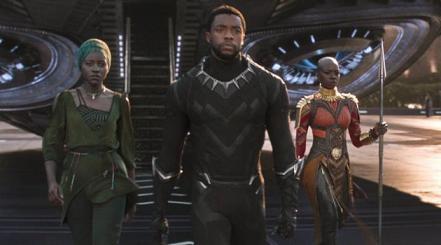
In the beginning of Black Panther, de facto King T’Challa returns to his blessed and peaceful kingdom of Wakanda.
Inciting Event: Plea for Action Against Unprecedented Cataclysm
News arrives of a great Cataclysm impending upon the Kingdom. The Cataclysm is unprecedented and seems unstoppable—but the King and his subjects have faith: he has never faced something bigger than he could handle before.
One of the messengers (or perhaps a Mage acting as the King’s advisor) may insist this is totally different: it is a supernatural event. This sobers the King, but he doesn’t take it too seriously. He refuses to respond to the Cataclysm as such and decides to treat it as he would any of the physical threats he has overcome during his reign.
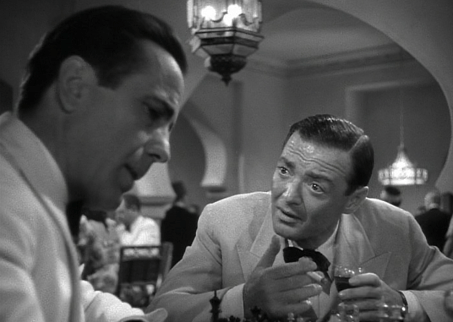
In Casablanca, Rick’s little kingdom is increasingly threatened by news of World War II’s encroachment.
2ND ACT: Preternatural WorldFirst Plot Point: Confronts Cataclysm With Administrative and Military Might
As the Cataclysm draws nearer to the heart of the kingdom, the King rides out to face it for the first time. It is not what he expected: it is of another world. But it is also not yet world-ending.
He attacks the Cataclysm with his normal methods of administrative and military might, seeming to push it back, but in fact entangling it fully with his Kingdom.
He also experiences the true threat of its power. Its eye is upon him, and it marks him in some dark way (perhaps in a physically destructive way, but certainly in a way that shifts his perspective of his “completeness” as King up to this point: he is a very small being in the face of this thing). He begins to comprehend his mortality.

Although within the complex morality presented in Princess Mononoke, Lady Eboshi is often thought of as the antagonist, she still represents a caring King archetype in her leadership of Iron Town. She does not know that in wounding the giant Boar, she is unleashing something supernatural.
First Pinch Point: Sword Breaks: The Old Methods of Success Aren ’t Working
After a series of seeming triumphs in which the King’s choices nominally work in protecting the people from the Cataclysm, everyone is shocked and sobered when the King attempts a gambit against the Cataclysm only to lose his greatest symbol of power (his “Sword”). His human might proves truly fallible against this inexplicable threat. Doubt of his ability to protect them (and rule them) begins to creep into his subjects’ minds. Doubt begins to creep into his as well.

In The Avengers: Infinity War, Tony watches helplessly as everyone around him turns to dust when Thanos snaps his fingers.
Midpoint: Witnesses True Supernatural Nature of Cataclysm
The King confronts the Cataclysm with a full show of his kingly might—and is stunned in the midst of it all to realize that his courage and his power mean nothing in the face of this unearthly force. He experiences a profound Moment of Truth, in which he realizes the Cataclysm cannot be faced, much less overcome, as he has overcome all other enemies: with mortal might. It is a supernatural force, and it will require a supernatural propitiation.
Most of his subjects do not see this. All they see is that their King has proven himself impotent against the storm. The entire Kingdom is shaken, as their King seems to withdraw from before this grave threat—not only impotent against it, but seemingly overcome by it.
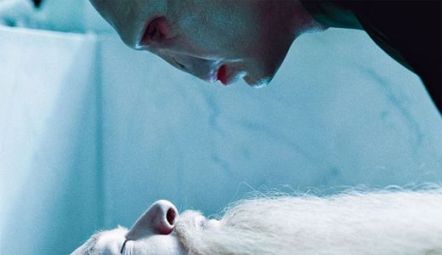
In The Deathly Hallows, Harry’s realization that Voldemort is after the all-powerful Elder Wand signifies that Harry is not just opposing Voldemort but, in essence, Death itself.
Second Pinch Point: Rebellion: Subjects Lose Faith
The King—probably with the help of a Mage Mentor—begins to understand that the only way to stop the Cataclysm is to surrender his crown (and perhaps his life). His time as an earthly ruler is finished; it is time for him to give up his might, give up his youth, give up his strength, give up even his pride. He must begin the descent into the Underworld, accepting old age and death and humbling himself into the Crone. He takes a few steps in this direction, beginning to shed his royal vestments in his preoccupation with understanding this supernatural antagonist.
His subjects witness this with increasing concern. They begin to lose faith in him as the King. The more unfaithful and aggressive among them (Bullies and Sorceresses) push back with a semi-successful coup. The King and his plans are ultimately protected only by those who do remain faithful: the Heroes and Queens who also find themselves growing in maturity through this trial. Whether the King is captured or whether he goes into hiding, he is now separated from the majority of his kingly resources.
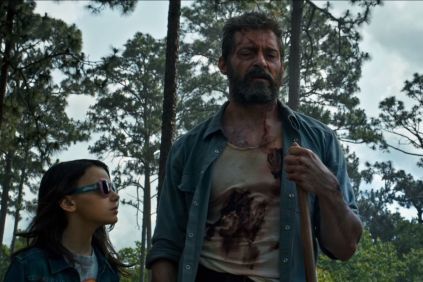
In Logan, after barely escaping his own clone at the Munson Farm, Logan’s increasing inability to heal his own wounds becomes obvious.
3rd ACTFalse Victory: Tries to Stop the Cataclysm With Kingly Might
In response to the pleas of his followers and the demands of the rebels, the King caves to his own deep desire to avoid sacrificing himself. He seizes a slight chance to stop the Cataclysm through physical means. He meets it “in the field” to do battle. He succeeds in some small measure, but the Cataclysm is not satisfied.
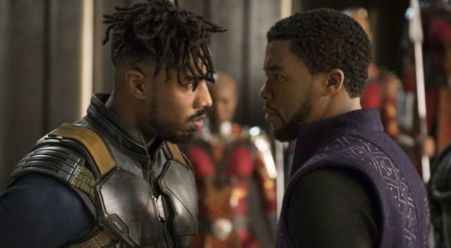
In Black Panther, T’Challa accepts Erik’s challenge to fight for the throne, willing to sacrifice his body to the mortal antagonist but not yet ready to face the true Cataclysm of the deeper spiritual truth about what brought Erik to Wakanda.
Third Plot Point: Kingdom on the Brink
The Kingdom is now in true peril. The King’s might could not stop the Cataclysm. His subjects reveal their true colors, some proving to be scoundrels, others proving their worth as his true successors. He is heartbroken by his subjects’ suffering, even as he is agonized by the unavoidable necessity of his own sacrifice. Even as his loyal subjects suggest ways to try again in combating the Cataclysm, the King realizes what he must do.

In Braveheart, William Wallace is betrayed by Robert the Bruce at the Battle of Falkirk, leading to defeat and capture.
Climax: Bequeaths the Crown, Offers Self as Propitiation
The King passes his Crown to his successor. At first, his subjects don’t understand that he intends to offer himself as propitiation to the Cataclysm. When they do realize his intentions, they are horrified; they do not understand the supernatural aspect of the Cataclysm and do not understand how his sacrifice can help them. They try to stop him, but he will not be deterred.
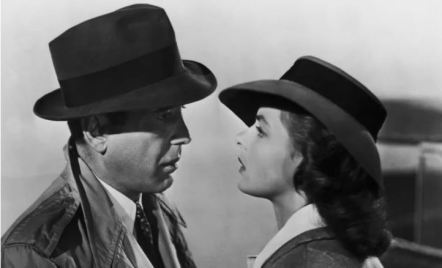
In Casablanca, recognizing the larger import of World War II, Rick sacrifices himself by sending his love Ilsa away with her freedom-fighter husband, while he himself enters the fray.
Climactic Moment: Sacrifices to Ensure Kingdom ’s Survival
The King, divested of his royalty, surrenders to the Cataclysm as a mere mortal—an old man who is willing to face death. His sacrifice is accepted, and the Cataclysm ends.

In Avengers: Endgame, Tony Stark accepts the final burden of defeating Thanos (a Greek word which, not so coincidentally, means “Death”). He snaps his fingers while wearing the Infinity Gauntlet, knowing it will mean his own end.
Resolution: Departs Liberated Kingdom
The King departs the Kingdom, no longer the King but the Crone. He may literally die, or he may simply take on the Crone identity and leave the Kingdom to his successors. The Kingdom is at peace, free of the Cataclysm and prepared to begin a new era of peace and prosperity under a new King who was trained by the old one.
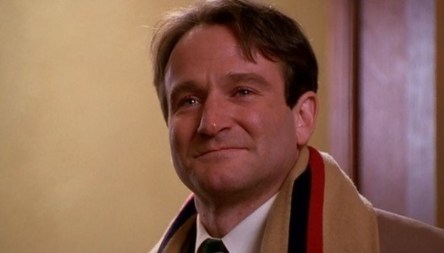
In Dead Poets Society, after John Keating is fired from his teaching job, he leaves the school, sadly, but knowing he has transformed the lives of his students.
Examples of the King ArcExamples of the King Arc include the following. Click on the links for structural analyses.
Tony Stark in Avengers: EndgameLady Eboshi in Princess Mononoke Beowulf in BeowulfRick in CasablancaMargaret Thatcher in Iron Lady (which offers just about all the life-arc archetypes, from Hero to Crone)T’Challa in Black Panther William Wallace in Braveheart Harry Potter in The Deathly Hallows John Keating in Dead Poets SocietyMarshall Pentecost in Pacific Rim Logan in LoganStay Tuned: Next week, we will study the Crone Arc.
Related Posts:
Story Theory and the Quest for MeaningAn Introduction to Archetypal StoriesArchetypal Character Arcs: A New SeriesThe Maiden ArcThe Hero ArcThe Queen ArcWordplayers, tell me your opinions! Can you think of any further examples of stories that feature the King Arc? Tell me in the comments!Click the “Play” button to Listen to Audio Version (or subscribe to the Helping Writers Become Authors podcast in Apple Podcast or Amazon Music).
___
Love Helping Writers Become Authors? You can now become a patron. (Huge thanks to those of you who are already part of my Patreon family!)The post Archetypal Character Arcs, Pt. 5: The King Arc appeared first on Helping Writers Become Authors.




